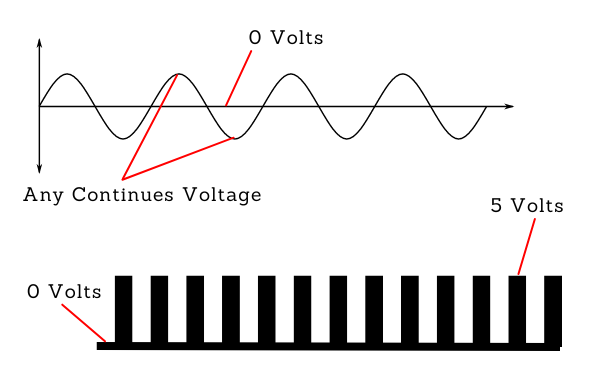Master The 2025 Ramsay Electrical Practice Test: Success In Sight With Our Free Practice Test & Course
- Overview
- Quiz
- Sample Question
- Curriculum
Step into your journey of acing the 2025 Ramsay Electric assessment with us. Benefit from our expert-crafted practice test which has been updated to mirror the latest test format. Practice with our free sample test and begin your journey to being a successful technician.

Complete Ramsay Electrical Prep
Last Updated: Jan 07, 2025
Course Content
-
1Electrical Fundamentals and ConceptsBuy this Course: Get full access to all lessons, practice tests and guides.
-
2Schematics, Print Reading, and Electrical TheoryBuy this Course: Get full access to all lessons, practice tests and guides.
-
3Electrical Equipment and InstrumentsBuy this Course: Get full access to all lessons, practice tests and guides.
-
4Electronics and CircuitsBuy this Course: Get full access to all lessons, practice tests and guides.
-
5Process Control and MonitoringBuy this Course: Get full access to all lessons, practice tests and guides.
-
6Process Control and InstrumentationBuy this Course: Get full access to all lessons, practice tests and guides.
-
7Construction, Installation, and MaintenanceBuy this Course: Get full access to all lessons, practice tests and guides.
-
8Control Systems and AutomationBuy this Course: Get full access to all lessons, practice tests and guides.
-
9Troubleshooting and Problem SolvingBuy this Course: Get full access to all lessons, practice tests and guides.
What Is the Ramsay Electrical Test (ElecTest)?
The ElecTest, also recognized as the Ramsay Electrical Test, is a purpose-built examination aimed at evaluating the competencies of individuals across various experience levels within the electrical sector. Crafted by the Ramsay Corporation, this test is used by many popular employers in the manufacturing and maintenance sectors to appraise prospective candidates for positions demanding expertise.
The test generally covers various topics within electrical knowledge, including basic electrical theory (AC and DC circuits, resistance, inductance, capacitance, power, etc.), electrical and electronic components (motors, generators, switches, relays, etc.), and practical application of electrical principles in real-world scenarios.
The test helps ensure that hired professionals possess the necessary foundational knowledge to perform their roles efficiently.
Ramsay ElecTest Practice Test
Ramsay ElecTest: Levels & Format
The Ramsay Electric Test offers different levels of assessment to accommodate candidates at various stages of their training and experience for different job profiles. Here’s an overview:
These tests are conducted in both offline and online formats, and the format you will face depends on the specific requirements and arrangements made by your hiring organization.
Apprentice / Entry Level

Trainee Level
Ideal for candidates with 2-3 years of experience, these tests assess a candidate’s proficiency in more complex electrical principles, troubleshooting skills, and the application of knowledge in real-world scenarios.
There is only one recommended test for this level called “Electrical Maintenance Trainee test”
that checks electrical knowledge with 60 multiple choice questions.
Journey Level
This advanced level, suitable for candidates with 2-5 years of experience, assesses in-depth understanding of electrical concepts, complex circuit analysis, and advanced troubleshooting.Tests at this level are designed to evaluate a candidate’s ability to manage and resolve more sophisticated electrical challenges, reflecting the proficiency expected at this stage of their career in the industry.

Above-Journey Level
Tailored for individuals with 5+ years of experience, this level tests mastery in electrical systems, project management, and complex troubleshooting, reflecting the proficiency of a fully experienced electrician.
There are two specific examinations at the Above-Journey/Full Electrician Level: Maintenance Electrician A – Form A and Maintenance Electrician B – Form A4. Each consists of 60 questions, aimed to thoroughly assess your electrical knowledge.
Ramsay ElecTest Question Types
Schematics and Print Reading: This part of the test assesses your ability to interpret and understand electrical schematics and blueprints. It includes questions on symbols, circuit diagrams, and blueprint reading skills crucial for planning, installing, and troubleshooting electrical systems.

- A:
PNP Transistor
- B:
Capacitor
- C:
Inductor
- D:
NPN Transistor
Explanation:
NPN Transistors have the current pointing outwards, hence the outward symbol.
Power Supplies & Power Distribution: This section encompasses questions pertaining to power supply units and the distribution of electrical power. It covers topics like the functioning and types of power supplies (AC, DC, Switched-mode, Uninterruptible Power Supply (UPS)), transformers, circuit breakers, power grids, and the safe and efficient distribution of power in electrical systems.

- A:
120 volts
- B:
240 volts
- C:
480 volts
- D:
960 volts
Explanation:
The voltage ratio of a transformer is equal to the number of turns in the secondary coil divided by the number of turns in the primary coil.
In this case, the voltage ratio is 200/100 = 2. Therefore, the voltage on the secondary coil is 240 * 2 = 480 volts.
Motors: This segment includes questions related to devices that transform electrical energy into mechanical energy. It covers questions for DC, AC, stepper, servo motors, etc.

- A:
Stator Winding
- B:
Rotor Winding
- C:
Bearing
- D:
End Bell
Explanation:
The rotor winding is the part of an electric motor that rotates. It is made up of a series of coils of wire that are wrapped around a metal core. When current flows through the coils, it creates a magnetic field. This magnetic field interacts with the magnetic field of the stator, which causes the rotor to rotate.
Digital and Analog Electronics: This section delves into questions surrounding both digital and analog electronics. Topics covered include signal processing, circuit designs, semiconductors, transistors, diodes, and other components. The focus is on understanding the fundamental differences and functionalities between digital and analog systems.

- A:
1
- B:
0
- C:
Error - Would Not Interpret the signal
- D:
Somewhere between 0 & 1
Explanation:
The digital system only recognizes two values: 1 and 0. The 3-volt signal is closer to 5 volts than it is to 0 volts, so the digital system will interpret it as 1.
The analog system, on the other hand, will be able to interpret the 3-volt signal as any value between 0 and 1. The exact value that the analog system interprets the signal as will depend on the specific analog system.
Control Circuits: This segment addresses questions related to control circuits, focusing on their design, function, and troubleshooting. Topics may include control circuit components such as relays, switches, and sensors, and how they work together in an overall system to control electrical devices and machinery.

- A:
The coil creates the magnetic field that activates the relay.
- B:
The coil is used to control the flow of current to the load.
- C:
The coil is used to detect changes in the environment.
- D:
The coil is used to turn the relay on and off.
Explanation:
The coil in an electromagnetic relay is the component that creates the magnetic field that activates the relay. When current flows through the coil, it creates a magnetic field. This magnetic field attracts the armature, which is a movable metal piece that is connected to the contacts. When the armature is attracted, it closes the contacts, which allows current to flow through the load.
Electrical Maintenance: This section comprises questions related to the maintenance and troubleshooting of electrical systems. It covers preventive maintenance practices, diagnosis of common electrical problems, safety measures, and techniques for maintaining and repairing different types of electrical equipment and systems.
- A:
A loose connection.
- B:
A short circuit.
- C:
A ground fault.
- D:
An overload.
Explanation:
A ground fault is the least likely cause of a motor overheating and the circuit breaker tripping. This is because a ground fault does not cause a large amount of current to flow. Instead, it causes the current to flow to the ground.
Computer & PLCs: This section delves into questions regarding computer systems and Programmable Logic Controllers (PLCs) in the context of electrical systems. It covers topics including the programming, operation, and troubleshooting of PLCs, as well as the use of computer.
- A:
PLCs cannot process data
- B:
PLCs are only used for personal computing
- C:
PLCs are designed to control industrial processes
- D:
PLCs have no input or output interfaces
Explanation:
The main distinction between a PLC and a typical computer is that a PLC is designed specifically to control industrial processes. They are ruggedized to withstand harsh industrial environments and have specialized I/O interfaces to connect with industrial equipment systems for control and monitoring purposes in electrical installations.
Test Instruments: This part of the test covers questions about the use of various test instruments in electrical work. It includes topics like the operation and application of multimeters, oscilloscopes, insulation testers, circuit analyzers, and other tools used for measuring and diagnosing electrical parameters and faults.
- A:
Multimeter
- B:
Oscilloscope
- C:
Insulation tester
- D:
Circuit analyzer
Explanation:
An oscilloscope is best for identifying voltage drop because it shows voltage and current over time. Multimeter and insulation tester are not as helpful. Circuit analyzer is too complex.
Construction & Installation: This segment covers questions related to the construction and installation of electrical systems and devices. It includes topics such as electrical codes, wiring methods, system design, safety procedures, and best practices for installing various types of electrical equipment and systems, from residential to commercial and industrial settings.
- A:
Nonmetallic-sheathed cable (NM)
- B:
Armored cable (BX)
- C:
Metal-clad cable (MC)
- D:
Flexible metal conduit (FMC)
Explanation:
MC cable is the best choice for this installation because it is fire-resistant, moisture-resistant, and flexible. NM cable is not as good because it is not as fire-resistant. BX cable is more expensive and FMC cable is not as flexible.
Ramsay Electrical Test: FAQs
There are different tests for different levels, ideally you can say for an average experience – there will be about 60multiple-choice questions. The duration can vary for different levels, but candidates are usually given about one hour to complete 60 questions.
The use of calculators can depend on the policies of the testing center or the specific requirements of the employer. It’s best to check directly with them prior to the test day.
Yes! to do your best on the Ramsay Electrical Test, it’s a great idea to brush up on the basics of electrical theory, control circuits, motors, and digital and analog electronics. Consider taking practice tests online or signing up for a preparation course ahead of time. This can help you feel more comfortable and prepared when it’s time to take the actual test.
The Ramsay Electrical Test uses raw scores (total correct answers), scaled scores (adjusted based on question difficulty), percentile ranks (comparing a candidate’s score with others), and performance bands (proficiency levels). The scoring system can be customized according to each organization’s needs.
The scoring criteria for the Ramsay Electrical Test may differ depending on industry norms and the specific role you’re applying for. It’s always a good idea to clarify with the HR department or the employer about their scoring system and what they consider to be a favorable score. This way, you can have a clearer understanding of what to aim for and how your performance will be evaluated.
The possibility of retaking the Ramsay Electrical Test after not passing the first time can vary depending on the policies set by the employer or the testing center. It’s always best to directly inquire with them to understand their specific rules regarding retaking the test.
No, the Ramsay Electrical Test is usually not the only assessment required to secure a job. Employers often have additional evaluations such as interviews, practical tests, and background checks as part of the overall selection process. It’s important to be aware of the specific requirements set by the employer for the best chance of securing the job.

Created by: Michael Lerner
BSc, Psychometric Tutor, Prepterminal Test Expert
7869 students,4.8, 1409 Reviews
Hey, I’m Michael, PrepTerminal’s Ramsay Electrical Tests expert. I am here to help you with any questions or concerns you may have about the Ramsay Electrical Tests. Feel free to contact me at [email protected].
